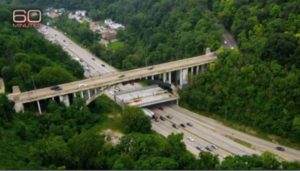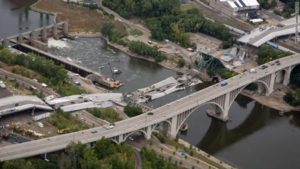America's Failing Infrastructure: A Crisis in Bridges and Roads America’s infrastructure is more than just roads and bridges—it's the foundation of our daily lives. From commuting to work to delivering goods across the country, our transportation systems are essential to economic growth and public safety. Yet, despite their importance, many of these structures are in dire need of repair. The 2013 Report Card for America’s Infrastructure by the American Society of Civil Engineers (ASCE) revealed a troubling reality: one in nine bridges is structurally deficient, meaning over 70,000 bridges nationwide require urgent attention. These issues aren’t just numbers—they represent real risks to public safety and economic stability. While the 2009 stimulus package provided a temporary boost, long-term solutions have been slow to materialize. Pittsburgh, often cited as a symbol of infrastructure decay, has over 4,000 bridges, with 20% classified as structurally deficient. Many of these were built over 80 years ago, far beyond their intended lifespan. The Liberty Bridge, for example, was constructed in 1928 and now faces serious structural concerns. In some cases, temporary steel supports have been added to prevent debris from falling on vehicles below. According to Andy Herman, a former president of ASCE, Pennsylvania is among the worst states when it comes to infrastructure challenges. Every year, one in four bridges in the state is deemed structurally deficient. The funding gap between what’s needed and what’s available continues to grow. In Philadelphia alone, a 22-mile stretch of I-95 includes 15 structurally deficient bridges, with repair costs estimated at $7 billion—far exceeding current budgets. In response to this crisis, communities are looking for innovative ways to address the problem. The Urban Land Institute urged cities to “do more with less†and explore creative solutions. Some states are starting to take action through new legislation, while private companies are developing advanced technologies to extend the life of aging infrastructure. HJ3 Composite Technologies, founded in 2001, is leading the way with carbon fiber solutions that strengthen bridges and overpasses. Their technology has been used to repair over 1 million square feet of infrastructure, reducing replacement costs by up to 80%. This kind of innovation offers a promising path forward. As concerned citizens, we must continue to raise awareness about the growing infrastructure crisis. By advocating for sustainable investment and supporting innovative solutions, we can help ensure safer, more reliable transportation systems for future generations. Investing in infrastructure not only improves safety but also: HJ3’s commitment to long-term, cost-effective solutions reflects a smart approach to maintaining our critical infrastructure. Contact us today to learn more about how we’re helping to build a stronger, safer future. We thank 60 Minutes for inspiring this blog and for their powerful report, "Falling Apart: America's Neglected Infrastructure." Car Door Central Lock,Central Door Controller,Car Central Lock Actuator,Car Central Locking System WENZHOU TIQNIU ELECTRICAL CO.,LTD. , https://www.tianqiuelectrical.com


It’s Time to Fix the US Infrastructure